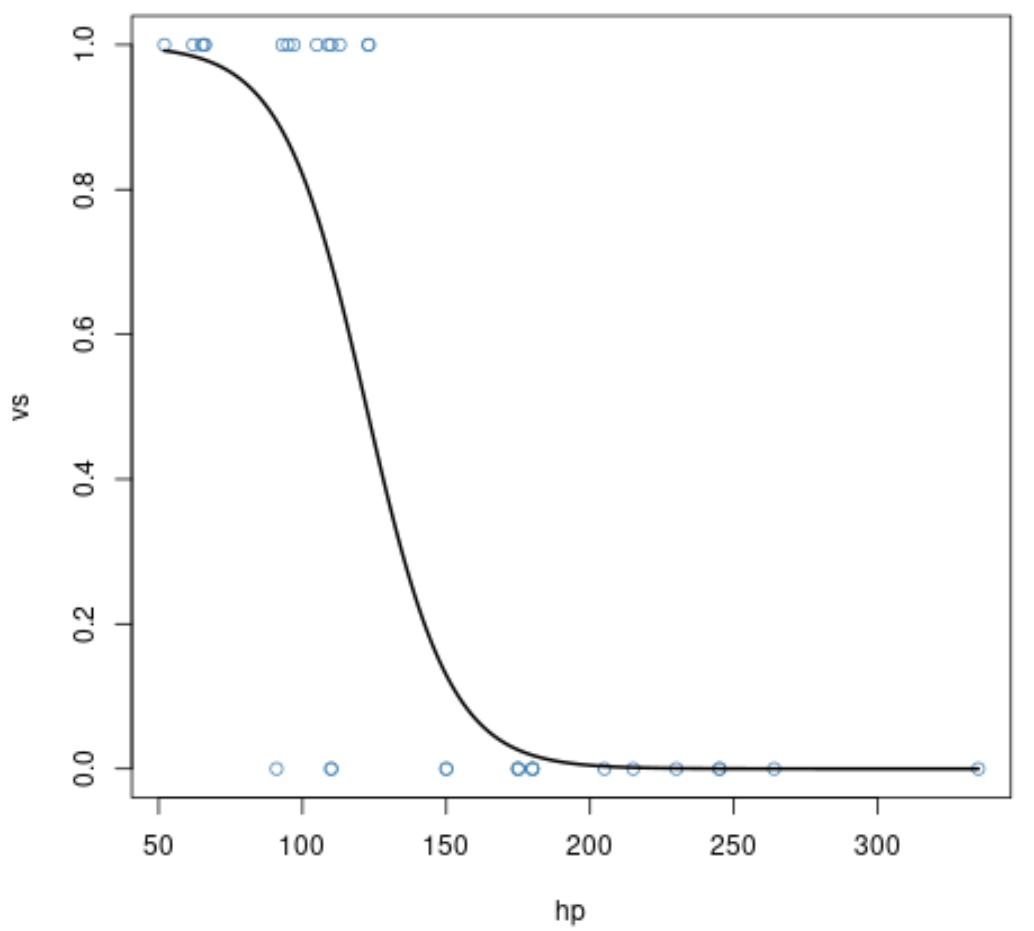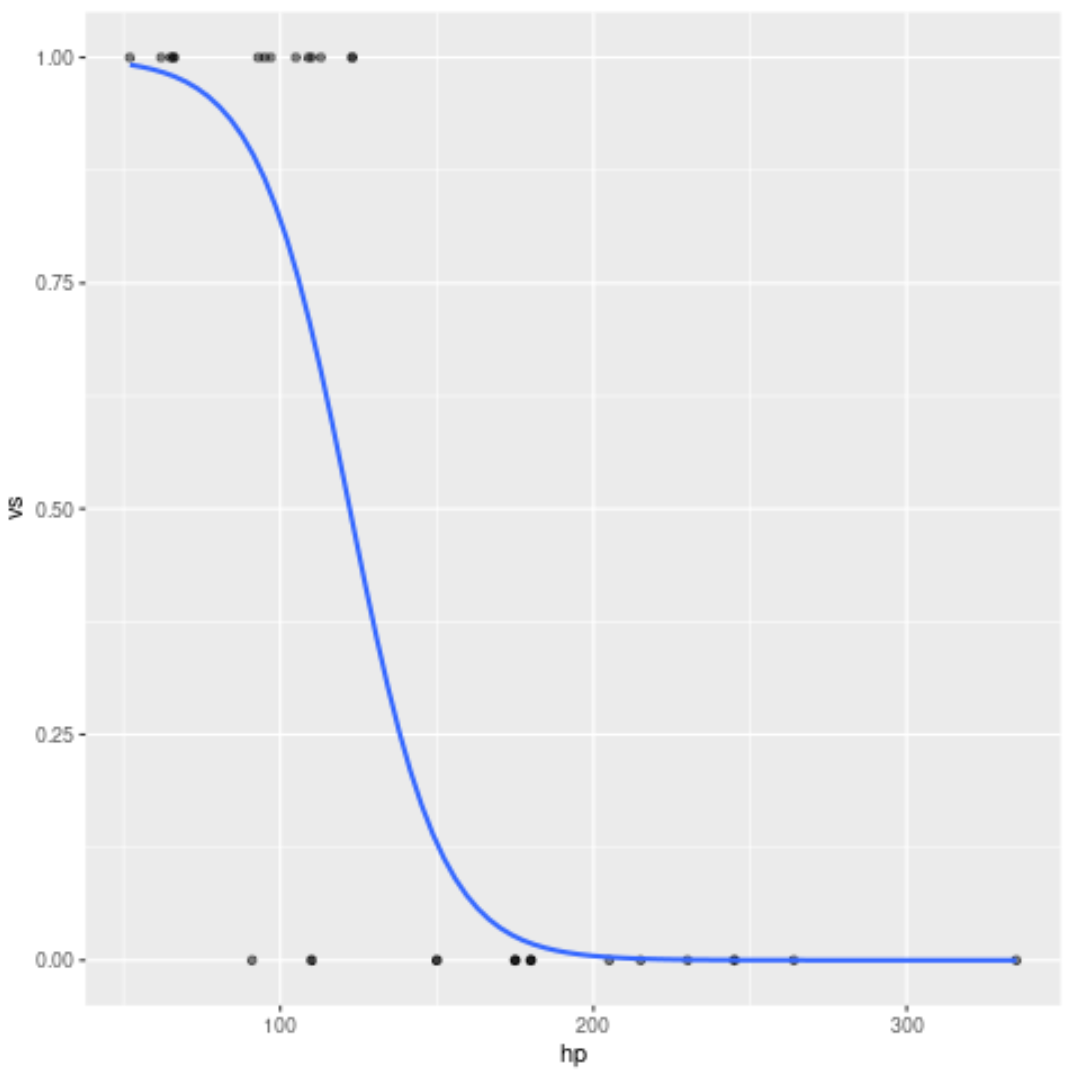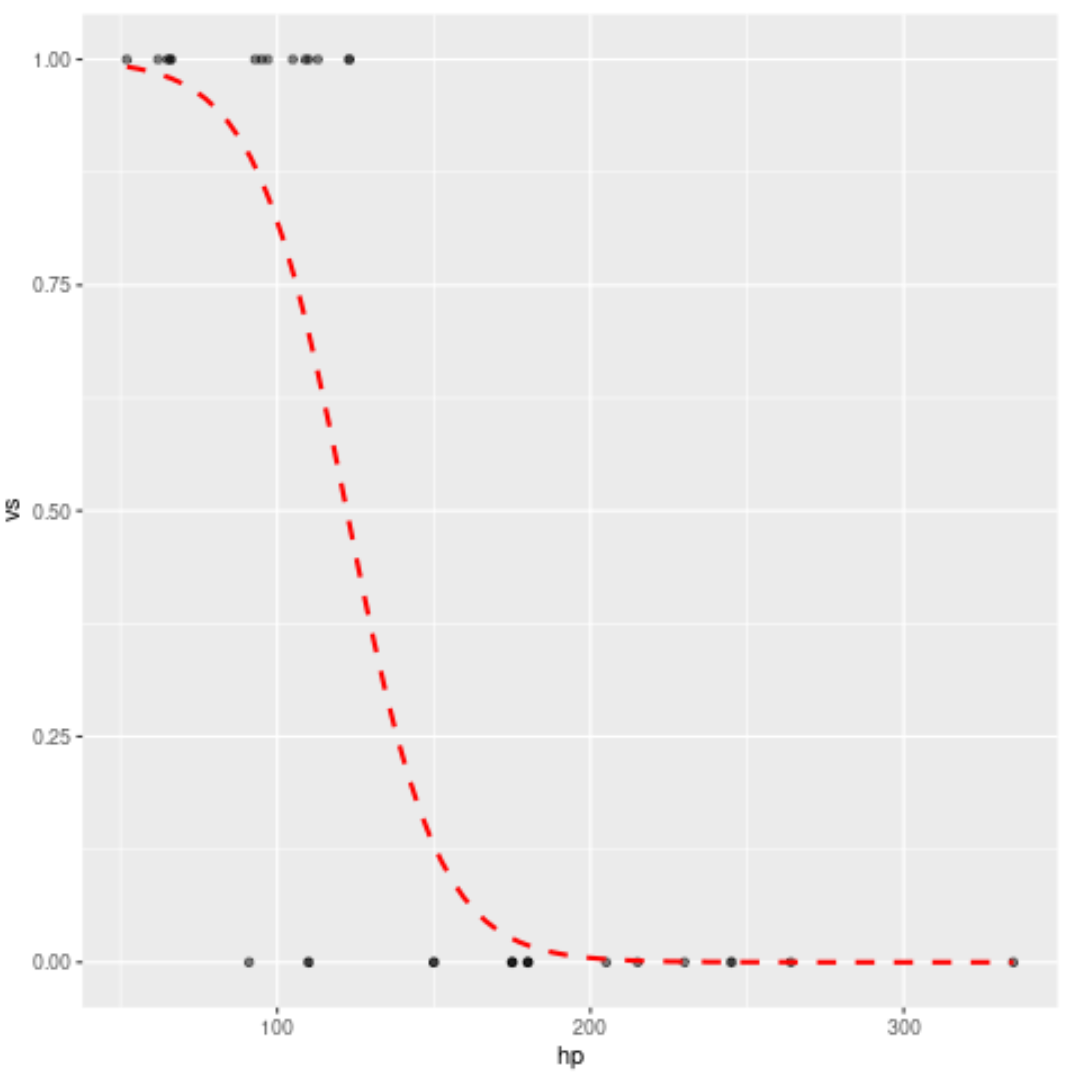R에서 로지스틱 회귀 곡선을 그리는 방법
종종 R에서 적합한 로지스틱 회귀 모델의 곡선을 플롯하고 싶을 수도 있습니다.
다행히도 이 작업은 매우 쉬우며 이 튜토리얼에서는 기본 R과 ggplot2 모두에서 이를 수행하는 방법을 설명합니다.
예: R을 기준으로 로지스틱 회귀 곡선 그리기
다음 코드는 R에 내장된 mtcars 데이터 세트의 변수를 사용하여 로지스틱 회귀 모델을 피팅하는 방법과 로지스틱 회귀 곡선을 그리는 방법을 보여줍니다.
#fit logistic regression model model <- glm(vs ~ hp, data=mtcars, family=binomial) #define new data frame that contains predictor variable newdata <- data. frame (hp=seq(min(mtcars$hp), max(mtcars$hp),len= 500 )) #use fitted model to predict values of vs newdata$vs = predict(model, newdata, type=" response ") #plot logistic regression curve plot(vs ~hp, data=mtcars, col=" steelblue ") lines(vs ~ hp, newdata, lwd= 2 )

x축은 예측 변수 hp 의 값을 표시하고 y축은 응답 변수 am 의 예측 확률을 표시합니다.
우리는 예측 변수 hp 의 값이 높을수록 응답 변수의 확률이 1 과 같을 확률이 낮다는 것을 분명히 알 수 있습니다.
예: ggplot2에서 로지스틱 회귀 곡선 그리기
다음 코드는 동일한 로지스틱 회귀 모델을 피팅하는 방법과 ggplot2 데이터 시각화 라이브러리를 사용하여 로지스틱 회귀 곡선을 그리는 방법을 보여줍니다.
library (ggplot2) #plot logistic regression curve ggplot(mtcars, aes (x=hp, y=vs)) + geom_point(alpha=.5) + stat_smooth(method=" glm ", se=FALSE, method. args = list(family=binomial))

이는 R 베이스를 사용하여 이전 예에서 생성된 곡선과 정확히 동일합니다.
곡선의 스타일도 자유롭게 변경해 보세요. 예를 들어, 곡선을 빨간색 점선으로 바꿀 수 있습니다.
library (ggplot2) #plot logistic regression curve ggplot(mtcars, aes (x=hp, y=vs)) + geom_point(alpha=.5) + stat_smooth(method=" glm ", se=FALSE, method. args = list(family=binomial), col=" red ", lty= 2 )

추가 리소스
로지스틱 회귀 소개
R에서 로지스틱 회귀를 수행하는 방법(단계별)
Python에서 로지스틱 회귀를 수행하는 방법(단계별)
R에서 seq 함수를 사용하는 방법